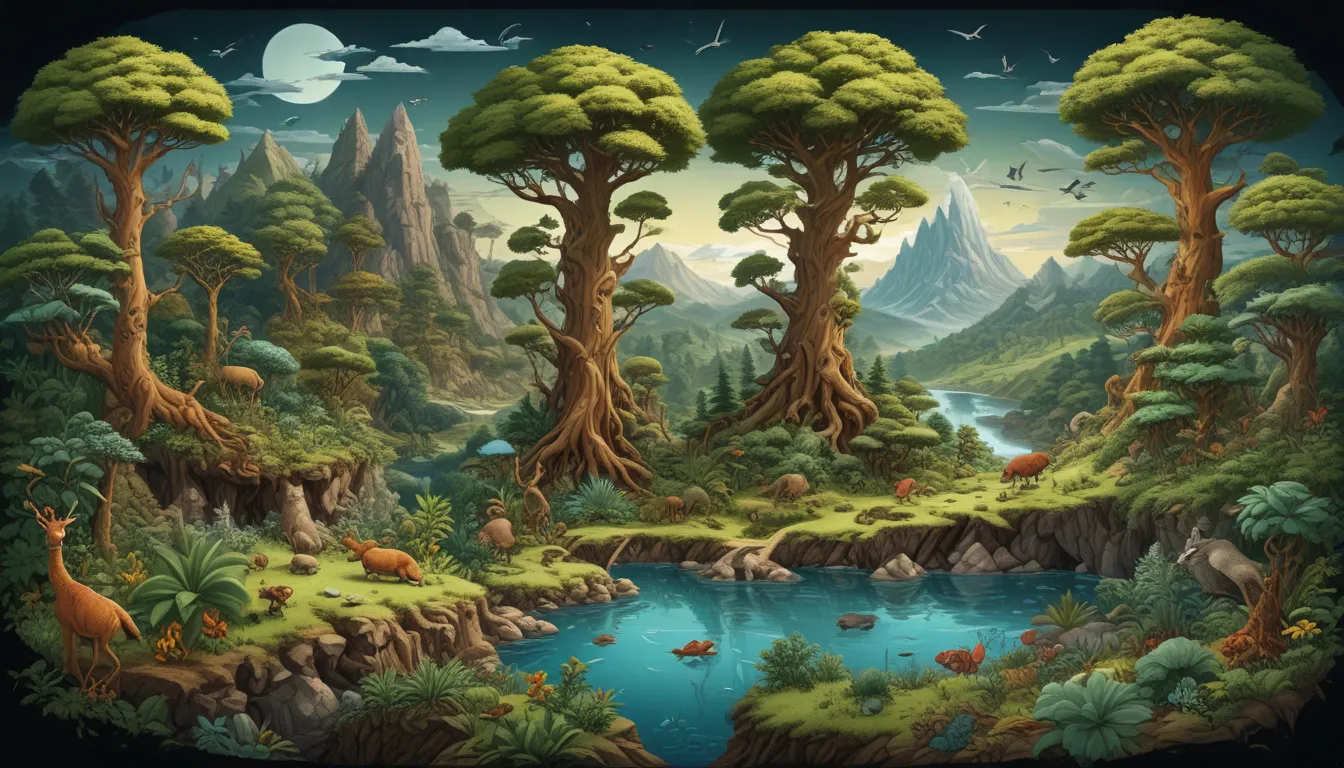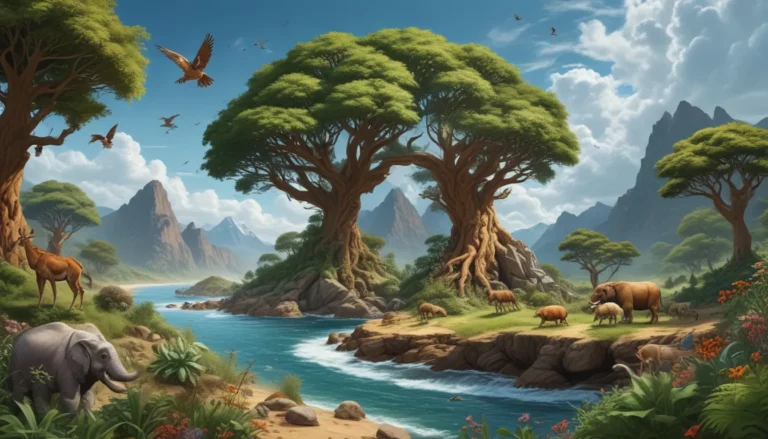A Note About Images: The images used in our articles are for illustration purposes only and may not exactly match the content. They are meant to engage readers, but the text should be relied upon for accurate information.
Have you ever marveled at the lush rainforests of the Amazon or been captivated by the frozen beauty of the Arctic tundra? These diverse habitats are known as biomes, large ecological areas that are characterized by their unique climate, vegetation, and wildlife. In this article, we will take a deep dive into the fascinating world of biomes and uncover nine captivating facts that shed light on their importance and intricacies. Whether you’re a nature enthusiast, an adventurer, or simply curious about the wonders of the natural world, these facts are sure to fascinate and surprise you.
The Diversity of Biomes
Biomes are distinct ecological communities that cover our planet, each with its own set of characteristics and species that have adapted to survive in their specific environment. From the aquatic realms of coral reefs to the icy expanses of the tundra, biomes play a crucial role in supporting various ecosystems and maintaining biodiversity on Earth.
Exploring the Types of Biomes
There are five main types of biomes: aquatic, desert, forest, grassland, and tundra. Each biome has its own unique features and inhabitants that have evolved to thrive in their respective environments. Whether it’s the vast expanse of a desert biome or the dense forests of a rainforest biome, each offers a different perspective on the wonders of nature.
Unveiling the Largest Biomes
- Amazon Rainforest: Spanning over 5.5 million square kilometers, the Amazon Rainforest is not only the largest rainforest but also the largest biome on Earth. It is a biodiversity hotspot, home to numerous plant and animal species, many of which are yet to be discovered.
- Sahara Desert: The Sahara Desert, located in northern Africa, is the hottest desert biome in the world. With temperatures reaching up to 50°C (122°F), it presents a challenging environment for both flora and fauna.
- Taiga (Boreal Forest): Stretching across the Northern Hemisphere, the Taiga biome is the largest terrestrial biome. It is characterized by coniferous forests and is inhabited by a variety of wildlife, including bears, wolves, and moose.
- Great Barrier Reef: Off the coast of Queensland, Australia, the Great Barrier Reef is the largest coral reef biome in the world. It is home to a stunning array of marine life and is considered one of the seven natural wonders of the world.
- Serengeti: Located in East Africa, the Serengeti is a famous grassland biome known for its incredible wildlife migrations. It is a haven for iconic animals such as lions, zebras, and wildebeests.
The Arctic Tundra’s Extreme Conditions
The Arctic tundra biome, found in the Northern Hemisphere, experiences extreme cold temperatures, long winters, and short summers. Characterized by permafrost and inhabited by hardy species like polar bears and Arctic foxes, this biome showcases the resilience of life in harsh environments.
The Essential Role of Biomes
Biomes are essential for maintaining the Earth’s biodiversity, providing habitats for countless species, producing oxygen, regulating climate patterns, and supporting ecological balance. Preserving and protecting these diverse ecosystems is crucial for the well-being of our planet and future generations.
Discovering the Intricacies of Nature
When we explore the captivating facts about biomes, we gain a deeper appreciation for the interconnectedness of life on Earth. The incredible adaptations, diverse ecosystems, and complex interactions within biomes highlight the beauty and resilience of our planet. By studying and learning about biomes, we unlock new insights into the delicate balance of nature and the importance of conservation for the preservation of these ecosystems.
FAQs about Biomes
- What are biomes?: Biomes are large geographical areas characterized by similar climatic conditions, ecosystems, and communities of plants and animals.
- How many biomes are there?: There are five major biomes, but some sources categorize the world into more specific biomes based on regional variations.
- Why are biomes important?: Biomes play a crucial role in maintaining biodiversity, regulating climate, and supporting ecosystems.
- How are humans impacting biomes?: Human activities such as deforestation and climate change are significantly impacting biomes worldwide.
- Can biomes be restored?: Efforts can be made to restore damaged or degraded biomes through conservation measures.
- Are there any endangered biomes?: Yes, tropical rainforests, coral reefs, and mangrove ecosystems are among the endangered biomes.
- How can I help conserve biomes?: Individuals can contribute to biome conservation by reducing their carbon footprint and supporting sustainable practices.
- Can animals adapt to different biomes?: Animals have remarkable abilities to adapt to different biomes through natural selection.
- What makes biomes so fascinating?: The diverse landscapes, unique species, and intricate ecosystems within biomes make them a captivating subject of study.
Conclusion
Exploring the diverse biomes of our planet reveals a world of wonder, beauty, and complexity. Each biome offers a unique perspective on the interconnectedness of life on Earth and the importance of preserving these delicate ecosystems. By delving into the captivating facts about biomes, we enrich our understanding of the natural world and inspire a commitment to conservation and sustainability. Let’s join hands to protect and cherish the incredible biodiversity that our planet has to offer.






